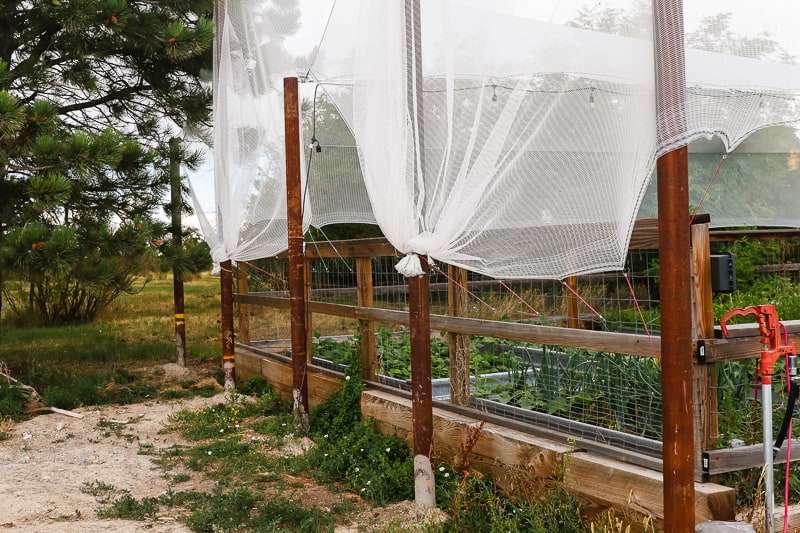Hail Protection For Garden
Protecting your garden from hail can feel like a daunting task, but with the right preparation and tools, it's easier than you think. Hail can cause significant damage to your plants, including bruising, splitting, and even uprooting. In this blog post, we will discuss the best ways to protect your garden from hail damage.
Pain Points
As a gardener, you spend countless hours and money on your plants, and the thought of losing them due to hail can be heartbreaking. Hail can cause irreparable damage to your garden, leaving you with wilted and damaged plants. It's a frustrating and costly experience, but there are ways to prevent this from happening.
Target of Hail Protection for Garden
The main aim of hail protection for your garden is to prevent hailstones from hitting your plants directly. Hail protection can come in many different forms, including netting, screens, and even building a physical structure over your garden.
Summary of Main Points
Hail can cause serious damage to your garden, but there are ways to prevent this from happening. The main target of hail protection for your garden is to ensure that hailstones do not hit your plants directly. Options for protection include netting, screens, and structures. In this post, we will explore these options in more detail.
Netting for Hail Protection for Garden
If you're looking for a relatively cheap and easy way to protect your garden from hail, netting is a great option. By covering your garden with a fine-mesh net, you can prevent hailstones from hitting your plants while still allowing them to receive sunlight and rainwater. Make sure to secure the edges of the netting to the ground to prevent any hail from sneaking in.

Personally, I've found that netting is the easiest and most effective way to protect my garden from hail. It's cost-effective, and I love that I can still see my plants while they're protected from hail.
Hail Screens
Hail screens are another great option for protecting your garden from hail. They are made of a sturdy material that can withstand hailstones, and they are easy to install around your garden. You can use these screens in combination with netting for extra protection.

Last year, I tried out hail screens for the first time, and I was impressed with how well they worked. They're more expensive than netting, but they offer a higher level of protection against hail.
Building a Physical Structure
For those who are willing to invest more time and money, building a physical structure over your garden is an excellent option for hail protection. You can create a greenhouse specifically designed for hail protection or build a simple wooden frame and cover it with hail-resistant material.

A few years ago, I built a simple wooden frame and covered it with hail-resistant material. While it was a significant investment of time and money, I was able to protect my garden from hail damage completely.
Maintaining Your Hail Protection
Once you've chosen your hail protection method, it's essential to maintain it regularly. Check for any tears or weak points in the material and repair them promptly to ensure maximum protection from hail. If you're using netting, be sure to remove it during the winter months to prevent it from getting damaged in the snow and cold.
Question and Answer
Q: Can hail still damage my plants, even with protection?
A: While hail protection methods can significantly reduce the amount of damage caused by hail, it's still possible for your plants to experience damage. For example, if you're using netting, larger hailstones may still damage the plants by bouncing off the netting and hitting the leaves or stems.
Q: What type of material is best for building a physical hail protection structure?
A: If you're building a physical structure for hail protection, consider using hail-resistant materials, such as fiberglass or polycarbonate panels. These materials are sturdy and can withstand hailstones of varying sizes.
Q: Is it worth investing in expensive hail protection methods if I only have a small garden?
A: The decision to invest in expensive hail protection methods ultimately depends on how much you value your garden and the potential cost of replacing damaged plants. If you're willing to take the risk and deal with potential hail damage, netting may be a more cost-effective option for you.
Q: How long does hail protection netting last?
A: The lifespan of hail protection netting ultimately depends on the quality of the netting and how well you maintain it. On average, high-quality netting can last up to five years when properly maintained.
Conclusion
Hail protection for your garden is essential to keep your plants safe from damage, and there are various options available, depending on your budget and gardening needs. Netting, hail screens, and physical structures are all effective options for hail protection, and with regular maintenance, they can provide long-lasting protection for your garden.
Gallery
The Crazy Hail Protection We Built For Our Garden • The Prairie Homestead

Photo Credit by: bing.com / hail crazy caused
3 Reliable Hail Protection Options For Your Garden | Plants, Quick

Photo Credit by: bing.com / hail morningchores thunderstorms
Garden-hail-protection-13 • The Prairie Homestead

Photo Credit by: bing.com / hail
The Crazy Hail Protection We Built For Our Garden • The Prairie Homestead

Photo Credit by: bing.com / hail poles
Hail Protection / Hail Screen. 1/2" Thin Wall PVC Tubing, Spray Paint

Photo Credit by: bing.com / hail protection garden screen pvc wire mesh galvanized tubing spray thin paint wall gardens cloth ties zip landscape choose board